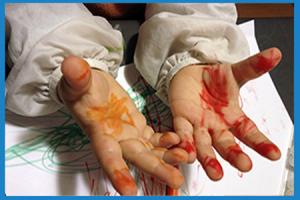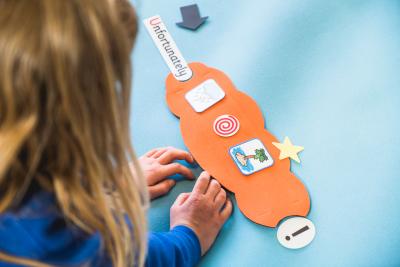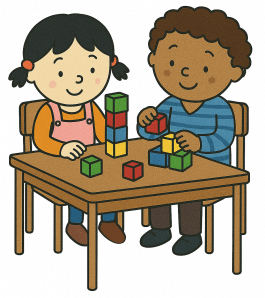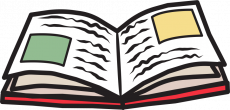3 Engaging Activities to Boost Fine Motor Skills in KS1
Understanding the Importance of Fine Motor Skills in KS1
Fine motor skills involve the coordination of small muscles in movements, typically involving the synchronisation of hands and fingers with the eyes. These skills are critical in young children as they underpin a child's ability to perform essential tasks such as writing, cutting, and buttoning clothes. Developing these skills in key stage one is crucial as they form the foundation for literacy and writing development.
The connection between fine motor skills and literacy development is significant. Children need to develop these skills to hold a pencil correctly, form letters, and navigate the pages of a book efficiently. Teachers play a vital role in identifying children who may need additional support in developing fine motor skills. They can observe tasks such as cutting with scissors or buttoning a shirt to determine if a child struggles with these precise movements.
By recognising these challenges early, teachers can implement targeted activities to bolster a child's fine motor development. Implementing fun and engaging activities in the classroom can significantly enhance children's enthusiasm and motivation to develop these skills. Incorporating resources like Mighty Writer can make the learning experience both interactive and enjoyable, encouraging children to participate actively.
Activity 1: Finger Painting
Finger painting is a delightful activity that provides an excellent opportunity for children to develop their fine motor skills. The setup requires materials such as non-toxic paints, large sheets of paper, and protective coverings for surfaces and clothing. Children use their fingers to create images, which helps develop the dexterity and strength needed for writing.

Incorporating tools such as paintbrushes, sponges, and tweezers to pick up the sponges can enhance the activity. These tools help exercise the hand muscles necessary for fine motor control. Through painting, children learn to manipulate objects of varying sizes and shapes, supporting the development of their hand-eye coordination.
Teachers can integrate literacy elements into finger painting by encouraging children to paint letters or words related to their current topics. This approach not only reinforces their learning but also makes the activity more meaningful and connected to their literacy development. By doing so, teachers can create a stimulating and inclusive classroom environment.
Activity 2: Mighty Writer Sentence Building
Sentence building with Mighty Writer is designed to engage children in literacy learning through play. The Mighty Writer resource includes a mat with colourful image tiles, sentence 'clouds' to represent parts of a sentence, and symbols for adverbs, adjectives, and verbs. Children place these components on the mat to form sentences, making learning tactile and fun.

Using Mighty Writer in the classroom provides numerous educational benefits. It allows children to visualise sentence structure, enhancing their understanding of grammar and composition. The interactive nature of the resource promotes collaboration among peers, fostering a supportive learning environment where children can learn from each other.
Additionally, Mighty Writer can be adapted to suit various learning needs. For SENCO pupils and children learning English as a second language, the visual and hands-on approach helps bridge language gaps and supports comprehension. This adaptability makes it an invaluable resource for teachers aiming to support diverse learners.
Activity 3: Letter Bead Threading for Dexterity
Letter bead threading is an engaging activity that combines creativity with skill development. To set up this activity, teachers will need large letter beads, laces, and a variety of simple words for children to spell out, such as SUN, DOG, CAT, and HAT. Children thread the beads onto the laces to form words, exercising their fine motor skills and hand-eye coordination. They can then thread the shoelaces to printed cards with the matching images on them, further refining their coordination skills.
This activity supports dexterity by requiring children to grasp small objects, improving their precision and control. The act of threading also strengthens the muscles in the hands and fingers, crucial for gripping pencils and developing legible handwriting.
Teachers can adapt the activity to different skill levels by varying the complexity of the words or by using different sizes of beads. By providing challenges that match each child's ability, teachers can ensure that all pupils benefit from the exercise, promoting confidence and success in their skill development.
How Activities Enhance Literacy and Writing Development
These hands-on activities contribute significantly to overall literacy improvement by developing the physical skills necessary for writing. As children enhance their fine motor skills, they become more confident and capable in their writing abilities. This confidence translates into a greater willingness to engage with literacy tasks both in and out of the classroom.

Engaging activities play a vital role in motivating children to learn. When learning is presented as fun and interactive, children are more likely to participate enthusiastically, leading to improved outcomes. Teachers can use these activities to create a dynamic and inclusive learning environment that caters to a wide range of learning styles and needs.
